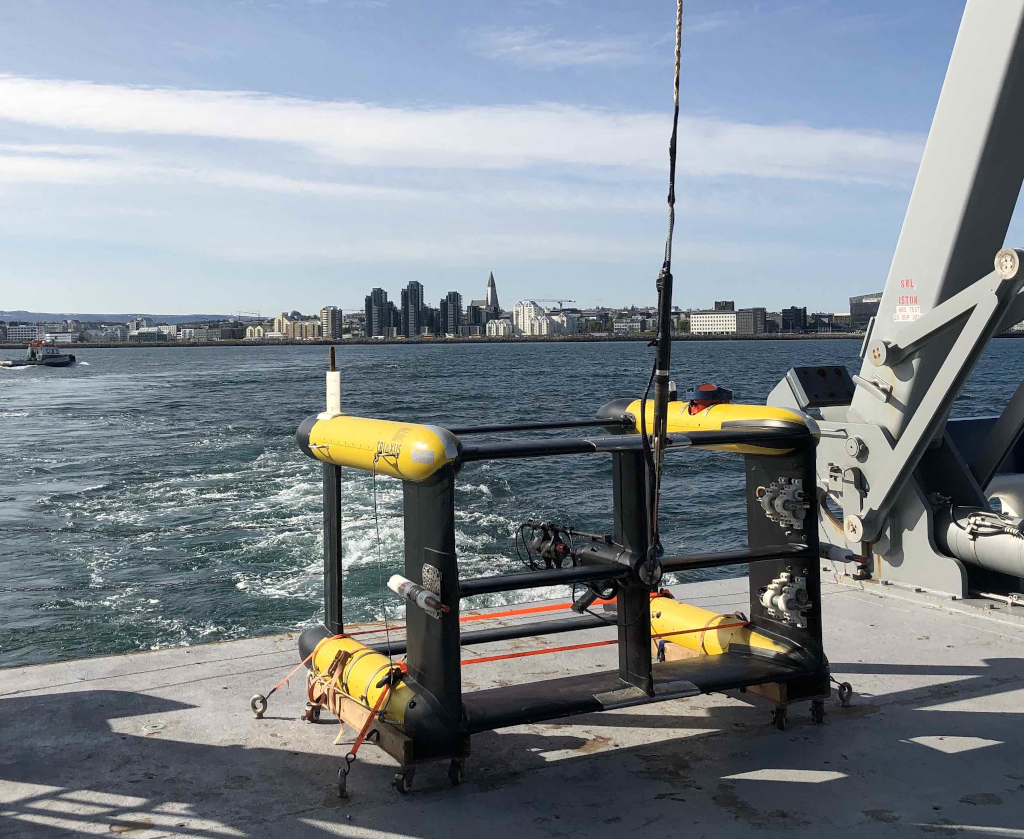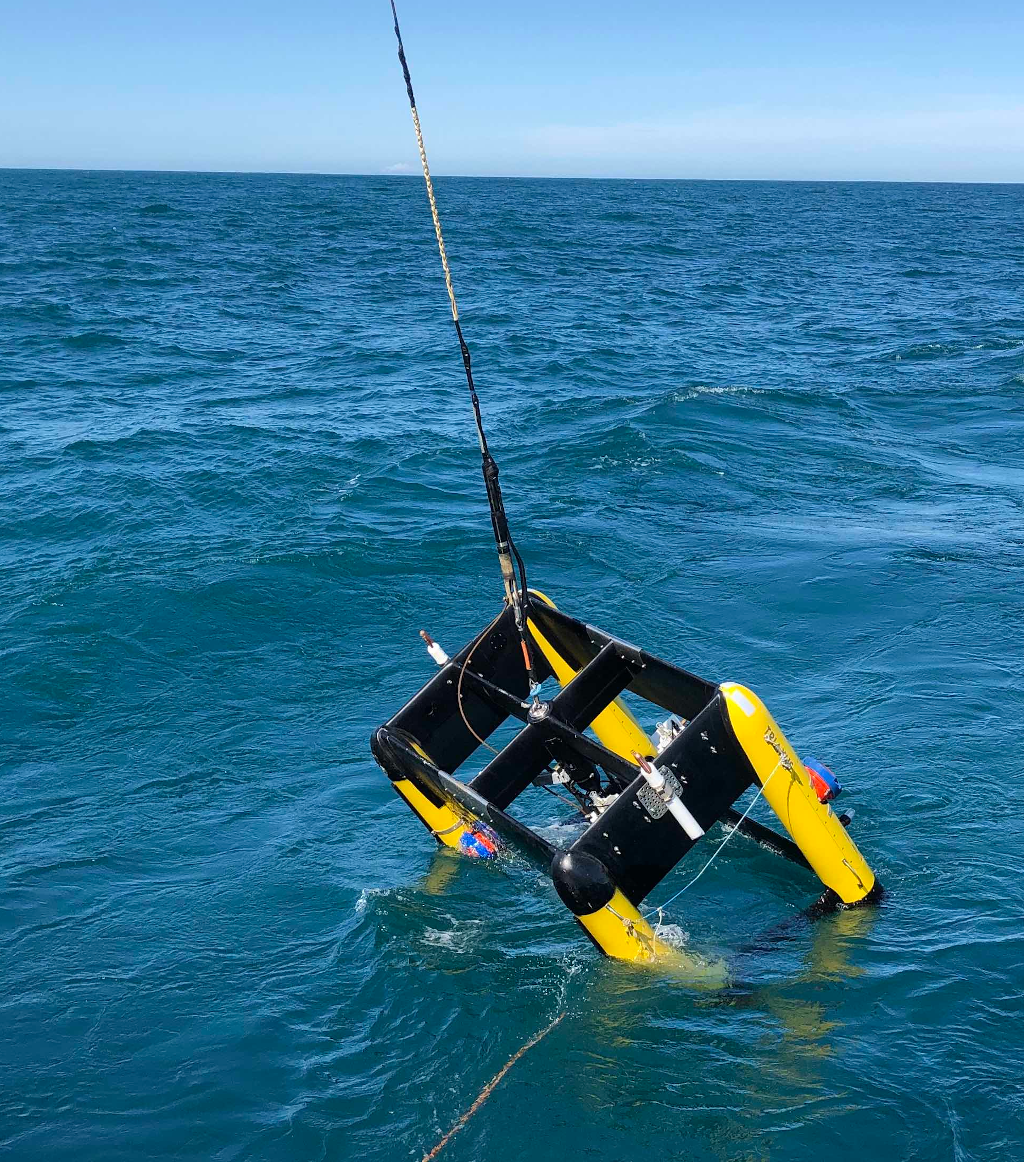The project seeks to understand the mechanisms that govern the near-inertial response to wind forcing, with a specific focus on how meso- and submesoscale variability impact generation and propagation of near-inertial internal waves. In particular, observations collected near Iceland are used to investigate how meso- and submesoscale variability, and the resulting vorticity fields, modulate the generation and propagation of near-inertial internal waves.The project seeks to better understand the dynamics that govern the partition between generation of high-wavenumber near-inertial internal waves, which drive local mixing, and low-wavenumber waves, which propagate away from generation sites.
In addition to periods of intense ship-based observations, several autonomous instruments have been deployed south of Iceland to provide data over long periods of time. Seagliders, Spray, and Slocum autonomous gliders have sampled the upper ocean for several months since May 2018, often in coordinated deployments with Wave Gliders, and surface drifters. Field operations have been conducted in collaborations with local researchers and agencies. Autonomous assets have been deployed and recovered with assistance from MFRI, Coast Guard and ICESAR.

Salinity over the course of SG234’s entire mission beginning in October 2020.

Absolute salinity sections from the Triaxus during one of the NISKINe surveys of the edge of an anticyclonic eddy, as a function of cross-stream distance, following a Wirewalker (0 km is the position of the Wirewalker, positive moving north). Each section is labeled with time in inertial periods since 09 June 2019 00:00. Gray ticks at the bottom of each panel indicate profile location. Photos of Triaxus are shown on the right.

Triaxus on the back deck of RV Armstrong sailing out from Reykjavik harbor at the start of the NISKINe 2019 cruise.

Triaxus being deployed from RV Armstrong during NISKINe 2019. Up and downlooking 300 kHz ADCP are visible in the upper port and
lower starboard tubes. Microstructure pods are visible outboard forward on both sides. Dual CT sensors are in the upper and
lower forward wing bays on the port side.